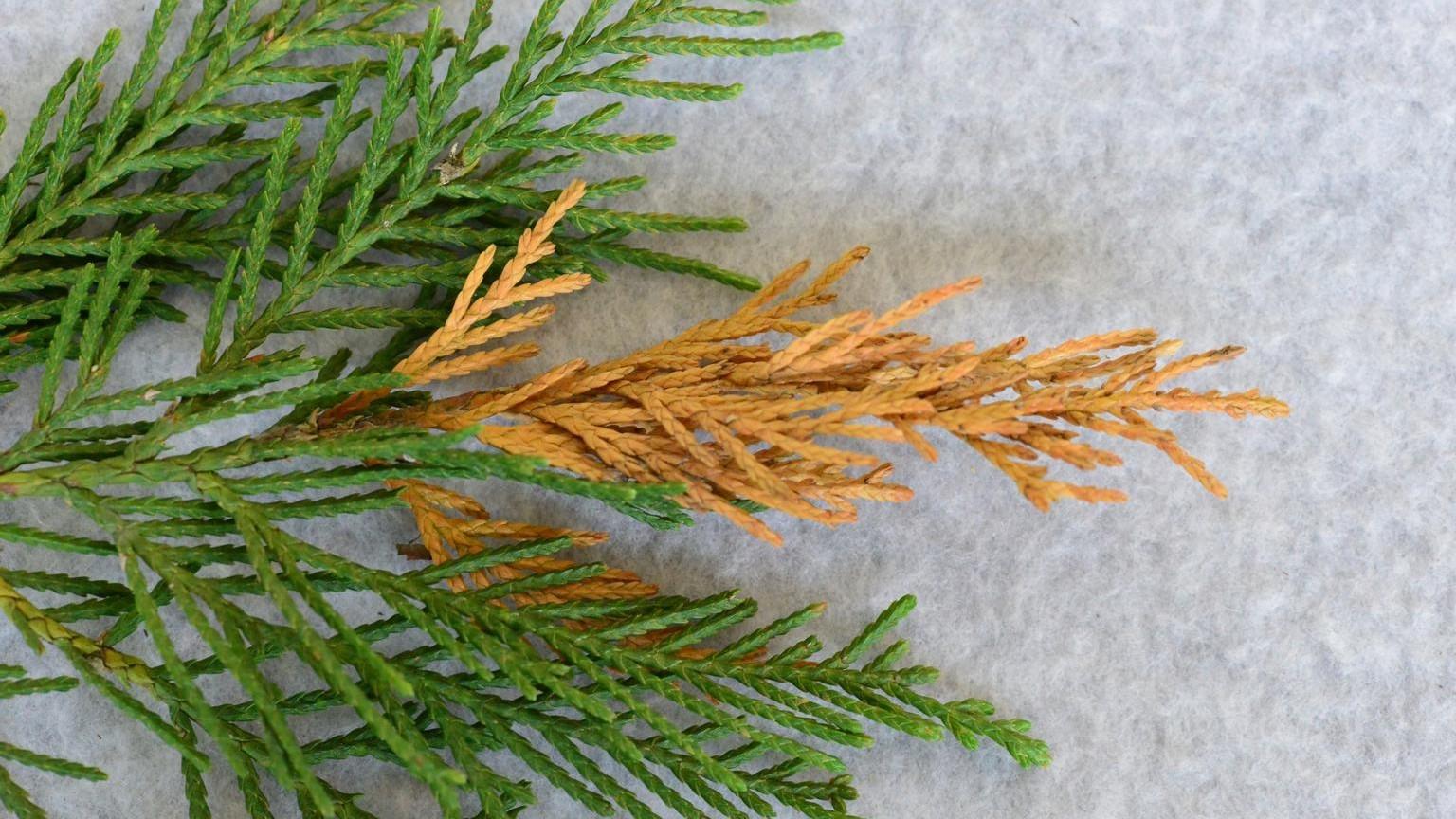Key points
- Both Seiridium and Botryosphaeria are fungi that cause dieback in Leylands planted in the landscape.
- The first symptoms are yellowing or fading of the foliage on scattered lateral branches that eventually turn a reddish brown color.
- Small lesions or cankers often appear as dark cracked areas on the bark.
- Seiridium cankers may develop fruiting bodies that appear as small black dots and will often have resin flow associated with them. Healthy Leylands can also show resin flow so this is not necessarily the only diagnostic symptom.
- Botryosphaeria cankers develop fruiting bodies just under the bark and typically have little or no resin flow. Botryosphaeria can also develop extensive cankers on the main stem.
- Fungal cankers spread primarily by spores released during rainy spring weather. The rainwater will carry the fungal spores to other branches. Infection on multiple branches throughout the tree or on the main trunk can kill the entire tree.

Photo: Jennifer Olson, Oklahoma St. Un., Bugwood.org
Management
- Both of these fungi cause disease when trees are stressed especially by drought.
- Watering and mulching will help retain soil moisture during dry periods.
- Prune out any diseased branches at least several inches below any visible cankers or dead wood.
- Avoid over fertilization.
- Fungicides are not effective for these diseases.

Photo: C. Y. Warfield, NCSU


